“Top of Europe” aims high with quick lift
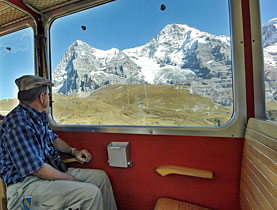
Tourists visiting one of Switzerland's most popular Alpine destinations - Jungfraujoch in the Bernese Oberland – may be able to reach it much faster in the future.
The Jungfrau Railways has announced it is looking into installing a fast lift to add to the attraction of the cogwheel railway that has been transporting people to the “Top of Europe” for nearly a century.
However, the futuristic lift or cable railway, which would shorten the journey time up to the Jungfraujoch station at 3,454 metres to about 20 minutes, came up against scepticism from some environmentalists when it was presented on Tuesday.
The current journey time from Lauterbrunnen to the Jungfraujoch is at least one hour and 40 minutes.
“It will either be a lift or a funicular. We think it would really be a good idea to have the possibility for people to go up quite fast and then go down on the other side in the cogwheel train,” railways spokeswoman Kathrin Nägeli told swissinfo.
Management of the Jungfrau Railways said in Interlaken that the idea for such a tunnel connection from the Lauterbrunnen Valley climbing 2,600 metres was futuristic, but realistic. The length of the tunnel would be about six kilometres.
Survey
Estimated costs are put at up to SFr200 million ($181.6 million) but depend to a large extent on the results of a geological survey.
“If everything goes well, we hope to start work in six years time in 2014, and the actual construction would take several years but we can’t say exactly how many,” Naegeli said.
The Jungfrau Railways said the new fast access would release growth potential and strengthen the touristic attractiveness of the Jungfrau region without adversely affecting the high Alpine landscape.
A statement from the Jungfrau Railways said the touristic and historic attractiveness of the cogwheel railway would be boosted, as guests could use the fast lift for the uphill or downhill journey.
The trip to the Jungfraujoch – Jungfrau saddle – could also become a half-day excursion, it added.
Guyer-Zeller’s vision
The idea of additional fast access follows the tradition of the founder of the railway, Adolf Guyer-Zeller, who initiated his then “totally futuristic vision” more than 100 years ago.
The planned additional access would feature the world’s longest tunnel-lift system in the world.
The statement said the railways management had now given an engineering firm in Bern, the task of carrying out a feasibility study to show if and how such a new tunnel link could be built without disturbing previously untouched areas of the high Alps.
It added that geological surveys had to be carried out “in close cooperation with the authorities, environmental organisations and landowners”.
Thomas Bieger, chairman of the board of the Jungfrau Railways and a professor of tourism at St Gallen University, said there was optimism that the feasibility study would confirm that such a project was possible.
Such a rapid link would be a “unique selling proposition”, he commented.
However, there are quite naturally concerns about the health of people who travel 2.6 km up or down in just 20 minutes.
“That’s one of the things we are going to study now but what is certain is that we will have at least one station in the middle where people can stop. The total journey time would be 20 minutes with a stop of about eight minutes,” Naegeli said.
The Swiss Foundation for Landscape Conservation has reacted with scepticism to the project, with a spokeswoman commenting that it might put pressure on a Unesco heritage site with increased leisure activities.
She added that more visitors might also mean more new buildings in the region.
swissinfo, Robert Brookes
Swiss engineer Adolf Guyer-Zeller put forward the definitive idea for the Jungfrau Railway in 1893 but the plans go back to about 1870.
The idea was that the railway would not start in the valley but from the Kleine Scheidegg summit station of the Wengernalp Railway, which was only two months old.
In an age of steam engines, Guyer-Zeller also decided that his railway had to be powered by electricity.
The railway to the 3,454 metre-high Jungfraujoch was completed in 1912, nine years later than originally planned. The costs were SFr14.9 million.
The cogwheel railway leaves the Kleine Scheidegg and goes into a tunnel through the Eiger and Mönch up to the Jungfraujoch station 3,454 metres above sea level.
The train travels about nine kilometres and climbs about 1,400 metres.
The line to the “Top of Europe” has been in increasing demand since its opening, except during the First and Second World Wars.
Last year a record 703,000 tourists travelled up the line, 12% more than in 2006.
The ski lift company of Zermatt has begun work on the expansion of its facilities on the 3,883 metre-high mountain, Kleine Matterhorn.
A gondola currently takes skiers to the summit of the Matterhorn’s smaller sister peak, but the plans include the construction of a new cable car to provide easier access for tourists coming from the Italian side of the ski area.
The new lift, according to the ski lift company, is important to satisfy the needs of tour operators wishing to offer the mountain excursion to tour groups landing at Milan’s Malpensa airport – about two hours to the south.
Zermatt also says it wants to build a hotel on the summit as well as an observation tower, which will extend the peak to 4,000m.
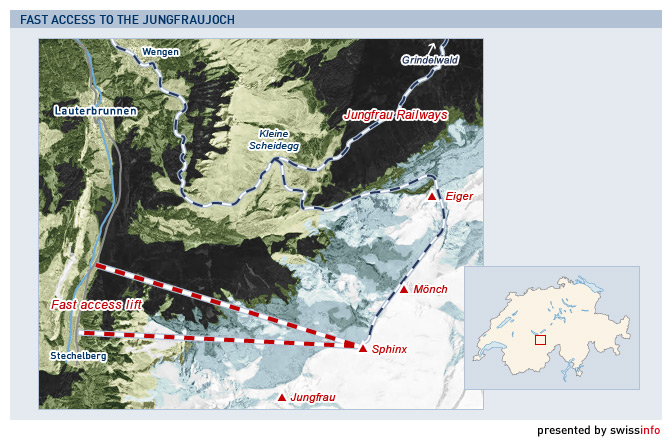

In compliance with the JTI standards
More: SWI swissinfo.ch certified by the Journalism Trust Initiative
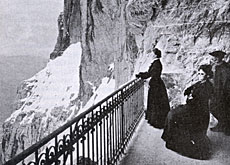
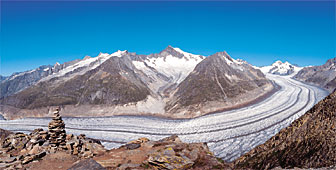
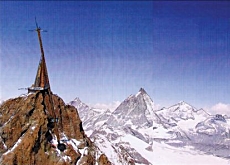
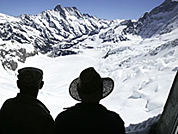
You can find an overview of ongoing debates with our journalists here . Please join us!
If you want to start a conversation about a topic raised in this article or want to report factual errors, email us at english@swissinfo.ch.